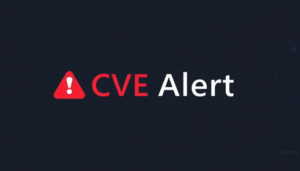CVE Alert: CVE-2025-59499 – Microsoft – Microsoft SQL Server 2017 (GDR)
CVE-2025-59499
Improper neutralization of special elements used in an sql command (‘sql injection’) in SQL Server allows an authorized attacker to elevate privileges over a network.
AI Summary Analysis
Risk verdict
High risk: enables remote privilege escalation with no user interaction, demanding urgent patching and verification of exposure.
Why this matters
The flaw permits an authorised attacker to elevate privileges within the database, potentially compromising data integrity and enabling further footholds in the host environment. In large organisations, such access could compromise multiple applications and data flows reliant on SQL Server, with consequent data exfiltration and lateral movement risks.
Most likely attack path
Attack could be initiated remotely over the network without user action, using low-privilege credentials to execute injected SQL commands. Internal administrators or service accounts could be targeted to escalate to high/admin rights within the DB, with scope remaining within the SQL Server instance but possible OS-level reach if privileges allow. Exploitation hinges on successful SQL injection within commands already issued to the server.
Who is most exposed
Typically exposed SQL Server deployments running 2017–2022 on x64 systems, especially where endpoints are reachable from untrusted networks or poorly segmented. Common exposure arises in on‑premises or cloud-hosted databases with firewall, VPN, or IAM misconfigurations.
Detection ideas
- Sudden spikes in elevated privilege grants or role changes in SQL Server logs
- Anomalous SQL injection-like query patterns or unexpected stored procedure calls
- Unusual failed/successful authentication attempts from new or untrusted IPs
- Detection of commands that touch OS-bound features or cross-database access
- Increased outbound traffic to DB ports or anomalous internal lateral movement signals
Mitigation and prioritisation
- Apply the latest cumulative updates/patches for all affected SQL Server versions; validate in a test environment before broad rollout.
- If patching is not feasible promptly, implement network controls: restrict access to trusted subnets, enforce VPN, enforce least-privilege service accounts, and disable exposed endpoints.
- Harden SQL code and apps: use parameterised queries, review for injection vectors, disable or tightly control features like xp_cmdshell.
- Enable comprehensive auditing and real-time integrity monitoring; alert on privilege escalations and anomalous DB activity.
- Plan and document patch windows, verify backups, and perform post‑patch validation.
Support Our Work
A considerable amount of time and effort goes into maintaining this website, creating backend automation and creating new features and content for you to make actionable intelligence decisions. Everyone that supports the site helps enable new functionality.
If you like the site, please support us on Patreon or Buy Me A Coffee using the buttons below.


